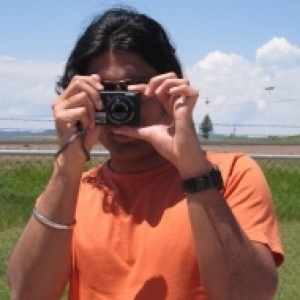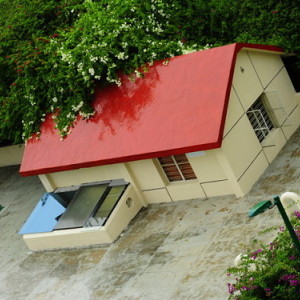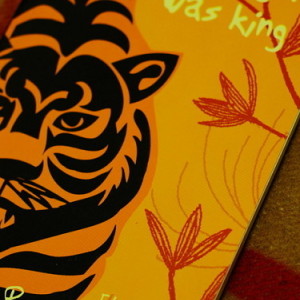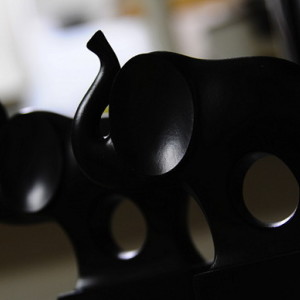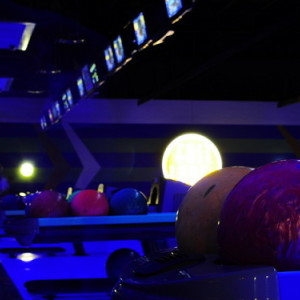- from India
- 550 entries
-

- Gift a Membership
"A photograph never grows old. You and I change, people change all through the months and years, but a photograph always remains the same. How nice to look at a photograph of mother or father taken many years ago. You see them as you remember them. But as people live on, they change completely. Read more...
"A photograph never grows old. You and I change, people change all through the months and years, but a photograph always remains the same. How nice to look at a photograph of mother or father taken many years ago. You see them as you remember them. But as people live on, they change completely. That is why I think a photograph can be kind." ~ Albert Einstein
'Photography is beautiful Journey, You enjoy the Beauty & Colors all long & People Cherish what you Showcase.' ~ Krish (Apr 5th 2011 10:56:00 CST)
--------------------
First Blipper & His Blips
Interesting Stuff..
A cute Blipper...
High Resolution (50MP) by Karl Taylor
--------------------
Blipland links:
Ponces: It started here, I'm Poncey.
life.turns: I'm Posing for it.
365 Days of 12Views
Nice Dew Shot
Katherine Ellis The Diary of a Diva
dis...dat...d'udda - the fact is...
Street photography tips from a top Times and Guardian photographer
Controlling the elements through photography
--------------------
Tutorials:
00. Karl Taylor
00. DSLR-Beauty-dish-Bouncecard
00. Depth of Field Calculator
00. dpreview
01. Olympus Learn Center
02. Capturing the Colors of Fall
03. Taking Pictures of Fireworks
04. Lighting Techniques: Light Painting
05. Photographing Fireworks
06. Tips for Beginners
07. Taking Baby Photos
08. Tips For Shooting in the Rain
09. Shooting Sports and Moving Subjects
10. Capturing the Colors of Autumn
11. High Dynamic Range Photography
12. Capture HD Video with your Nikon D-SLR
13. The-Nifty-Fifty: Why 50mm Prime Lens ?
--------------------
Krish in Flickr 1
Krish in Flickr 2
-----------------
Picasa Albums:
-----------------
01. Devil's Den State Park
02. Lost Bridge Marina
03. Bikes Blues & BBQ
04. Beautiful Bentonville
05. Arkansas Wildlife
06. Christmas Parade 2010
07. Christmas Program 2010
08. Krish Folio
09. Tulsa Hindu Temple
10. 2011 Snow Storm
11. 2011 - World Cup Semi Final (IND vs. PAK)
12. Tulips "Focus Points"
13. FACES
14. 7 Expressions
15. Tanger Outlet & Silver Dollar City
16. 4th July 2011 Fireworks
17. Bowling Night
18. Leaves
19. CarShow-2011
20. Joplin - Two Months after Tornado
21. Downtown San Jose
22. Computer History Museum
23. Sun Shades
24. CarShow-Aug 2011
25. Rampyari
-------
Gear :
-------
Nikon Coolpix S570
November 15th 2010: Upgraded to
D300s
AF-S NIKKOR 28-300mm f/3.5-5.6G ED VR
Tiffen 77mm UV Filter
July 30th 2011: AF NIKKOR 50mm f/1.8D
August 9, 2011:
Manfrotto 190XPROB Tripod &
498RC2 Midi Ball Head
------------------------------------------------
Few Definitions I always feel worth reading:
------------------------------------------------
** Typical one-third-stop F-Number scale
"1.0" , 1.1, 1.2, "1.4", 1.6, 1.8, "2", 2.2, 2.5, "2.8", 3.2, 3.5, "4", 4.5, 5.0, "5.6", 6.3, 7.1, "8", 9, 10, "11", 13, 14, "16", 18, 20, "22"
** Typical Shutter Speeds
1/1000 s, 1/500 s, 1/250 s, 1/125 s, 1/60 s, 1/30 s, 1/15 s, 1/8 s, 1/4 s, 1/2 s, 1 s
** Bulb, abbreviated B, is a shutter speed setting on an adjustable camera that allows for long exposure times under the direct control of the photographer. With this setting, the shutter simply stays open as long as the shutter release button remains depressed.
** f8.0 & f9.0 are called "Don't Care Apertures": No matter what, you'll get a good picture in most daylight shots.
** Butterfly Lighting: is named that because of the shape of the shadow created directly beneath the nose. When the nose is pointing in the direction of the light, wherever it may be, and the light is high enough to cast a downward shadow, you end up with butterfly portrait lighting.
** Avoid shadows, it is not always a good idea. On the subject, shadow will give different perspective but not on back ground.
We can easily avoid by having one light behind the subject that lights the back ground. Another way to avoid shadow is by using black blanket as back ground.
Few simple techniques imagining you are at 6 O' clock place where subject is at the center of the clock...
For MEN, use one light from 9 and one at 7.50 to make one side darker. If it is too dark, use a reflector or small wattage light at 4.50 and one at 12 to light the back ground. For WOMEN, use same lights from all angles.
** Sunny f/16 Rule: is a method of estimating correct daylight exposures without a light meter. "On a sunny day set aperture to f/16 and shutter speed to the [reciprocal of the] ISO film speed [or ISO setting] for a subject in direct sunlight."
** SWEET SPOT: is the aperture at which your lens is at its sharpest. Your lens? sweet spot is 2 stops above its widest aperture [If your lens? widest aperture is f 2.8, your sweet spot should be f 5.6]. Prime lenses are usually sharper than Zoom lenses.
**Rule of Thirds: is a compositional rule of thumb in visual arts such as painting, photography and design. The rule states that an image should be imagined as divided into nine equal parts by two equally-spaced horizontal lines and two equally-spaced vertical lines, and that important compositional elements should be placed along these lines or their intersections. Proponents of the technique claim that aligning a subject with these points creates more tension, energy and interest in the composition than simply centering the subject would.
* How-To-Photograph-Silhouettes: Place your subject (the shape you want to be blacked out) in front of some source of light and force your camera to set its exposure based upon the brightest part of your frame (the background) and not the subject of your image. This will make your subject under exposed (very dark, if not black). What we?re trying to do is make camera think that it?s the bright parts of the picture we are most interested in.
IN Nutshell:
- Choose a Strong Subject
- Turn off your Flash
- Get Your Light Right
- Frame your image
- Make silhouetted shapes distinct and uncluttered
- Focus
- Click
* To Take This kinda shot:
- find a tree with Character
- Bright lighting beyond tree helps
- Stand under it & choose a interesting angle
- Make sure you have camera in hand (important)
- Lean backwards, don't fall now
- As you put it "click"
* Image Histogram: is a type of histogram that acts as a graphical representation of the tonal distribution in a digital image.
It plots the number of pixels for each tonal value. By looking at the histogram for a specific image a viewer will be able to judge the entire tonal distribution at a glance.
Photographers can use them as an aid to show the distribution of tones captured, and whether image detail has been lost to blown-out highlights or blacked-out shadows.
The horizontal axis of the graph represents the tonal variations, while the vertical axis represents the number of pixels in that particular tone.
The "left side" of the horizontal axis represents the black and dark areas, the "middle" represents medium grey and the "right hand side" represents light and pure white areas.
The vertical axis represents the size of the area that is captured in each one of these zones. Thus, the histogram for a very bright image with few dark areas and/or shadows will have most of its data points on the right side and center of the graph. Conversely, the histogram for a very dark image will have the majority of its data points on the left side and center of the graph.
* Photography: is the process, activity and art of creating still or moving pictures by recording radiation on a radiation-sensitive medium, such as a photographic film, or an electronic sensor. Photography uses foremost radiation in the UV, visible and near-IR spectrum. For common purposes the term light is used instead of radiation. Light reflected or emitted from objects form a real image on a light sensitive area (film or plate) or a FPA pixel array sensor by means of a pin hole or lens in a device known as a camera during a timed exposure. The result on film or plate is a latent image, subsequently developed into a visual image (negative or diapositive). An image on paper base is known as a print. The result on the FPA pixel array sensor is an electrical charge at each pixel which is electronically processed and stored in a computer (raster)-image file for subsequent display or processing. Photography has many uses for business, science, manufacturing (f.i. Photolithography), art, and recreational purposes.
* Aperture: In optics, an aperture is a hole or an opening through which light travels. More specifically, the aperture of an optical system is the opening that determines the cone angle of a bundle of rays that come to a focus in the image plane. The aperture determines how collimated the admitted rays are, which is of great importance for the appearance at the image plane. If an aperture is narrow, then highly collimated rays are admitted, resulting in a sharp focus at the image plane. If an aperture is wide, then uncollimated rays are admitted, resulting in a sharp focus only for rays with a certain focal length. This means that a wide aperture results in an image that is sharp around what the lens is focusing on and blurred otherwise. The aperture also determines how many of the incoming rays are actually admitted and thus how much light reaches the image plane (the narrower the aperture, the darker the image for a given exposure time).
* Shutter Speed: is a common term used to discuss exposure time, the effective length of time a camera's shutter is open. The total exposure is proportional to this exposure time, or duration of light reaching the film or image sensor.
* ISO: Film speed is the measure of a photographic film's sensitivity to light, determined by sensitometry and measured on various numerical scales, the most recent being the ISO system. Relatively insensitive film, with a correspondingly lower speed index requires more exposure to light to produce the same image density as a more sensitive film, and is thus commonly termed a slow film. Highly sensitive films are correspondingly termed fast films. A closely related ISO system is used to measure the sensitivity of digital imaging systems. In both digital and film photography, the reduction of exposure corresponding to use of higher sensitivities generally leads to reduced image quality (via coarser film grain or higher image noise of other types). Basically, the higher the film speed, the worse the photo quality.
* Feel free to drop me a note at agrawalkrish@gmail.com , Follow me @ Twitter or See My Updates @ Facebook.
